Introduction
Today we look at one of the first lenses released for Nikon’s Z mount full-frame mirrorless cameras: the Nikkor Z 50mm f/1.8 S. This standard lens is versatile enough to be used in street, travel, and everyday photography. it is also a good choice for portraiture, especially on an APS-C camera or on a fullframe camera in DX mode. Combined with a fast f/1.8 aperture, it’s the right choice whenever you don’t know what to expect and want to be prepared for anything, as it gives you both fast shutter speeds and pretty out-of-focus background blur. Lenses with this focal length and maximum aperture combination have been known as Nifty Fifties, but for $630 it sits between the traditionally affordable ‘Nifty Fifty’ lenses and the more expensive f/1.4 professional options. So, the question remains: is it a traditional Nifty Fifty or a sophisticated high-end lens? Let’s find out!
![]() I tested this lens on a 46 Mp Nikon Z 7II (Sample images Nikon Z 7 II, Nikon Z fc, and Nikon Z f)
I tested this lens on a 46 Mp Nikon Z 7II (Sample images Nikon Z 7 II, Nikon Z fc, and Nikon Z f)
 You can see this review as YouTube video here!
You can see this review as YouTube video here!
Sample Images
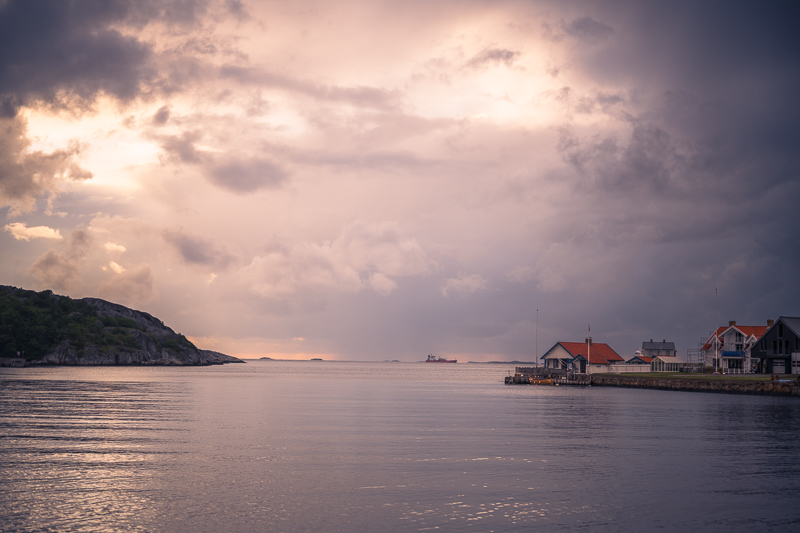
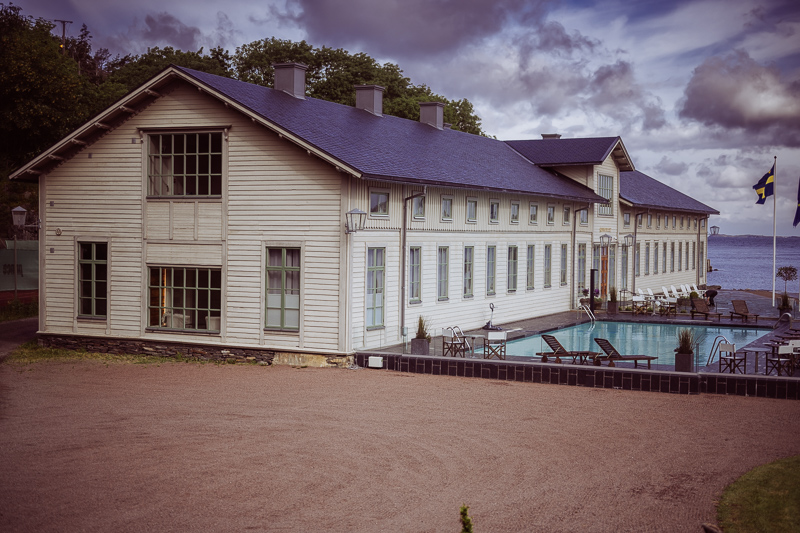

Nikon Z 7II | Nikon Z 50mm f/1.8 S | f/1.8


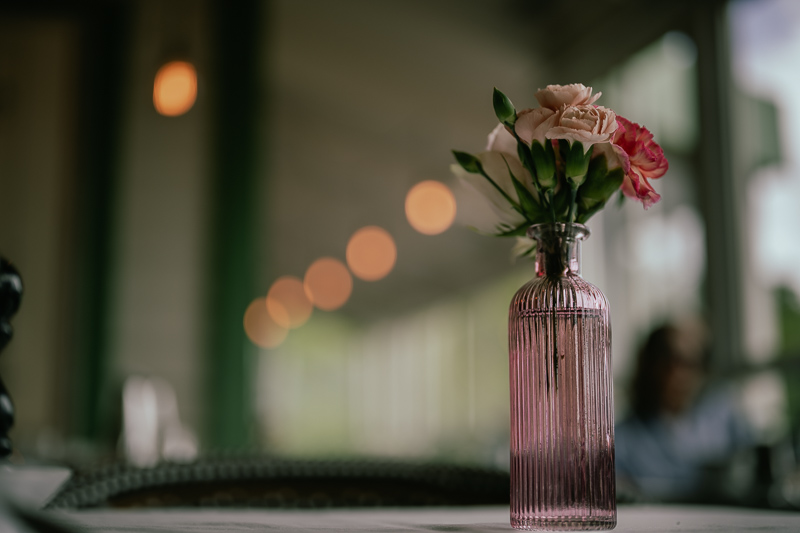


Most of the sample images in this review and many more can be found in higher resolution here.
Specifications
| Focal Length | 50mm |
| Angle of View | 47° |
| # of Aperture Blades | 9 |
| Max Aperture | f/1.8 |
| Min Aperture | f/16 |
| Min Focus Distance | 0.4 |
| Filter Size | 62mm |
| Lens Mount | Nikon Z |
| Weight | 415 g |
| Size (D x L) | 76 x 86.5mm |
| Elements/Group | 12 / 9 |

| Buy new: B&H, Amazon for $630 (Affiliate links) Buy used: eBay ~ $320 (Affiliate links) |
Disclosure
I bought this lens with my own earned money.

Handling
The lens is made of a combination of heavy-duty high-quality plastic and metal. For being a 50mm f/1.8 it is fairly large but not excessively heavy. Look at this size comparison between four generations of Nikkor 50mm f/1.8!

In the pursuit of optical perfection, with each generation the lens has grown in size and weight. While this lens’s body is mostly of plastic the mount plate is of metal and there is a weather sealing gasket under the mounting plate.
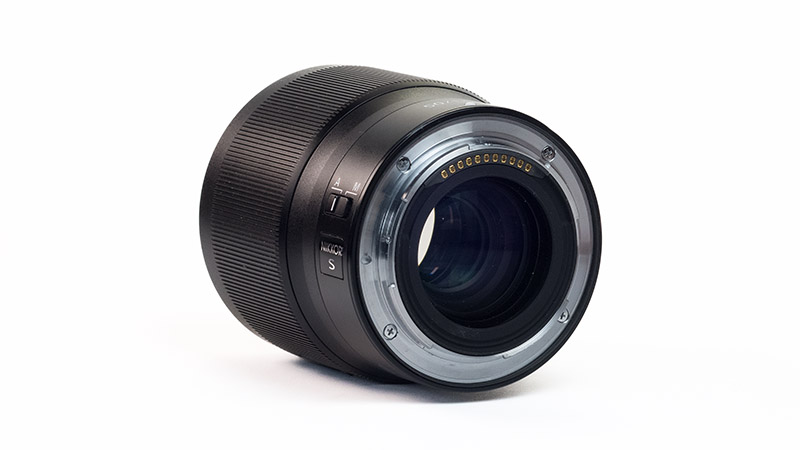
The relatively large focusing ring is also metallic, which turns smoothly, but it is not super responsive, it lags a little when manual focusing. You can reverse the direction you rotate the ring when adjusting the manual focus.
The ring can be customised to control the manual focusing, aperture setting, exposure compensation, or ISO sensitivity during still photography. During video recording they can be customised to control Manual Focusing, Power aperture, Exposure compensation, and ISO sensitivity. Power aperture lets you change the aperture seamlessly (or clickless) while filming is in progress. This can be useful when you move from a bright outdoor location into a building, for example.
The autofocus is accurate, silent and quite fast, although not the absolute fastest AF system available.

Additionally, there’s an AF-MF switch on the side of the lens barrel that allows you to switch between autofocus and manual focus. This switch can also be customised to control a variety of other functions like AE/AF lock, framing grid display, image preview, metering mode, zoom on/off, etc. The lens comes with a decently sized plastic hood.
There is no image stabilisation built into this lens.
Optical Features

Optical Development History
Before we delve into the optical qualities of this lens, it’s interesting to explore the historical development of Nikon’s Nifty-Fifty lenses. This will give us some context about the design philosophy and potential improvements Nikon has aimed for over the generations. We’ll be focusing on lenses with a maximum relative aperture of f/2 to f/1.8.
When Nikon introduced the Nikon F mount for SLR cameras some 65 years ago, their first 50mm lens relied on a proven concept – the classic Double Gauss design, invented in the late 19th century, featuring six elements in four groups positioned symmetrically back-to-back.

However, with the limitations of optical knowledge and technology at the time, it was extremely challenging to create a fast 50mm lens for SLR cameras with their reflex mirrors, based on the original formula. So, they tweaked the construction a little and also added a weak concave element at the front of the 6/4 construction to introduce the first ever Nikon F 50mm lens in June 1959; the Nikkor-S Auto 5cm f/2.

5 years later, in 1964, advancements in optical design allowed Nikon to create a true 6/4 double Gauss lens with some tweak, NIKKOR-H Auto 50mm f/2.

They kept this formula another 14 years until 1978, when they came up with a new design of the same formula for the legendary AI Nikkor 50mm f/1.8S

Nikon relied on the same double Gauss formula for several decades, even throughout the introduction of their early autofocus lenses. This continued until the introduction of the AF-D 50mm f/1.8 lens in 2002, which marked another change for Nikon’s 50mm f/1.8 lenses in many years, albeit with a slight modification of the same formula.

As you can see, Nikon relied on the same double Gauss formula for over 50 years, continuously optimising it for better performance. However, with the emergence of high-resolution sensors in digital SLR cameras, Nikon recognised the need for an upgrade. In 2011, they finally departed from the time-tested classic 6-element, 4-group double Gauss design after over 50 years, implementing new technology to create the groundbreaking AF-S 50mm f/1.8G lens, widely considered one of their best-performing 50mm lenses ever. This lens, featuring a 7-element design with a groundbreaking aspherical element, marked a significant leap forward in Nikon’s 50mm lens design.

With the arrival of mirrorless cameras, manufacturers gained greater freedom in lens design. Nikon took a significant leap with the Nikkor Z 50mm f/1.8 S, incorporating not just one or two additional lens elements, but 5 additional elements for a whopping 12 elements in a 9-group construction. Nikon apparently spared no expense and included 2 aspherical elements and two ED glasses and also put their high-end Nano Crystal coating on the lens surfaces.

All this in an attempt to design a lens with superior image quality, but have they succeeded? Let’s find out!
Sharpness (Infinity)
For the infinity sharpness test, we look at three areas of the image, center, mid-frame, and corner, see highlighted areas in the image below!
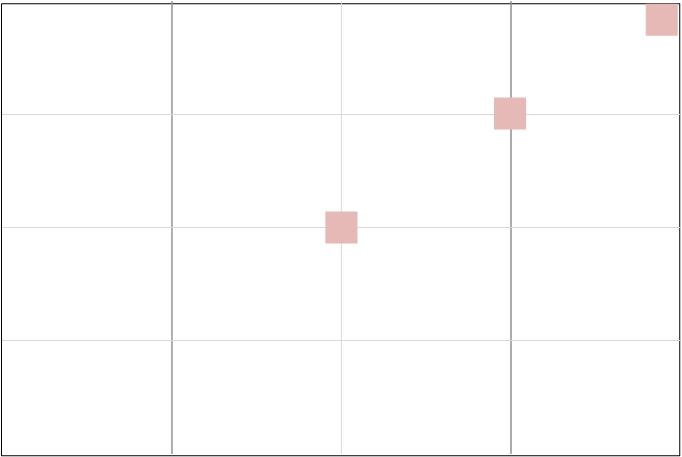


The center sharpness wide open is phenomenal, the midframe’s is almost excellent and the corner sharpness is good. The sharpness improves everywhere by stopping down and peaks at f/4, where sharpness is excellent all the way to the corner. It is a very strong performance and the center sharpness is among the best (if not the best) you can find.
Sharpness (Portrait)
Let’s look at the points of interest for portraits at the portrait distance: the very center, the center’s inner periphery (1/3 rule intersection), and the center’s outer periphery (1/4th intersection).





Excellent sharpness both in the center, inner and outer circles. The outer circle is darker at f1.8 – f/2 due to the vignetting at the lens’s widest apertures.
Sharpness (Close-up)







The close-up sharpness is very good wide open at f/1.8 and at f/2.8. Then it is excellent throughout the aperture settings until f/16 where it falls back to very good due to diffraction.
Lens Distortion
To test the lens distortion, I switched off the in-camera distortion correction and converted the raw image in RawTherapee, which doesn’t automatically correct Nikon lenses’ distortion. Even without in-camera correction, there was virtually no distortion visible in the image.

Vignetting
The test shots were taken with in-camera correction set to OFF.
The vignetting at max aperture (1.8) is relatively high, which in certain scenes may require correction, unless the in-camera correction is on, but not worst than similar lenses. Stopping down by just 1/3 of a stop to f/2 makes it more manageable and between f/2 and f/2.8 it will be a matter of taste if you want to correct it or not, From f/4 and smaller apertures it is negligible.

- F/1.8: 2.2 EV
- F/2.8: 1.3 EV
- F/4.0: 0.9 EV
- F/5.6: 0.9 EV
- F/8.0: 0.9 EV
Focus Shift & Aberrations
There is no focus shift or spherical aberration visible . The longitudinal chromatic aberration (bokeh fringing) is negligible and the lateral chromatic aberration is virtually non-existent. Well, excellent correction of all aberrations.
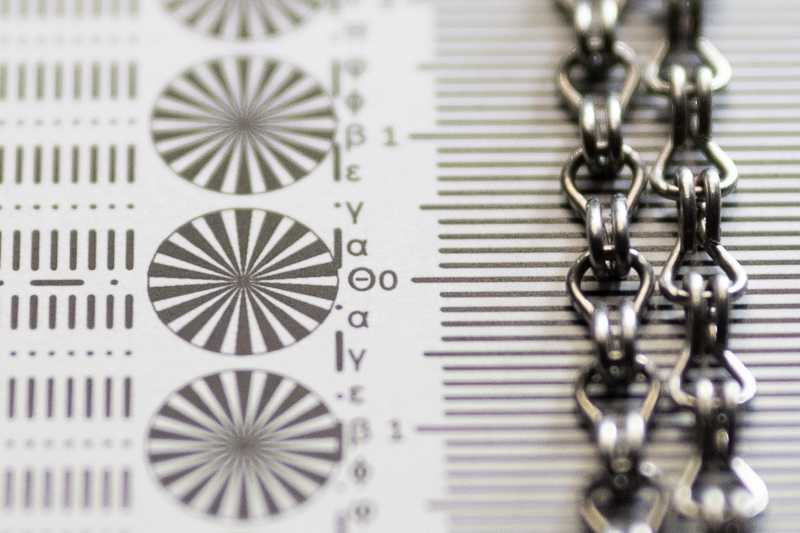


Here is a 100% crop of the image’s upper left corner from a 46 Mp sensor.

Flare Resistance
In this category you can make any lens look bad if you try hard and long, but the Nikkor Z 50mm f/1.8 S performs very well in bright light. While no lens is entirely immune to flare, this lens handles backlit situations admirably. The petal-shaped hood effectively blocks stray light, minimising its impact. As you stop down the aperture, any slight flare transforms from a weak local hazy effect into sharper points of light. At wider apertures, the lens performs exceptionally well though, with minimal ghosting or flare even in challenging lighting conditions.
Coma
While the coma correction is not perfect wide open at f/1.8, it is very good and better than competitors e.g. Sony Carl Zeiss Sonnar T* FE 55 mm f/1.8 ZA. Close the aperture just one stop to f/2.8 and the tiny negligible coma disappears.
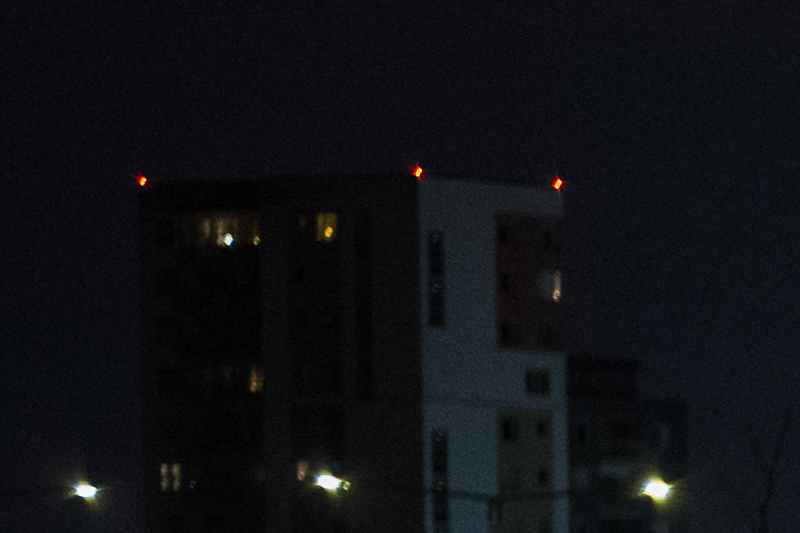


Sunstars
You can get decent 18 pointed stars from f/11 with this lens, they become more distinct and nicer at f/16.






Focus Breathing
Much to videographers’ delight, this lens is completely free from focus breathing. Good again.
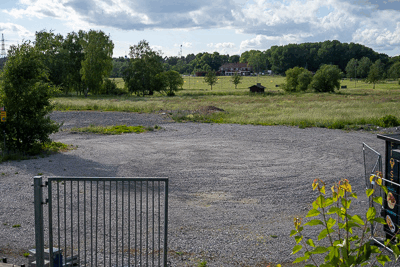
Bokeh
Bokeh balls look very nice, evenly lit without colored edges. You can sometimes find some onion ring textures inside them from the aspherical elements, but they are fairly minor and unlikely to be noticeable in most photos. Towards the corner of the frame you get some cat’s eye shapes, but overall the effect is quite pleasing.
Now, let’s take a look at how the bokeh performs at different distances, as its characteristics can vary.

At the near minimum focusing distance, there are no issues at all – everything in the background is smoothly rendered into a soft blur.
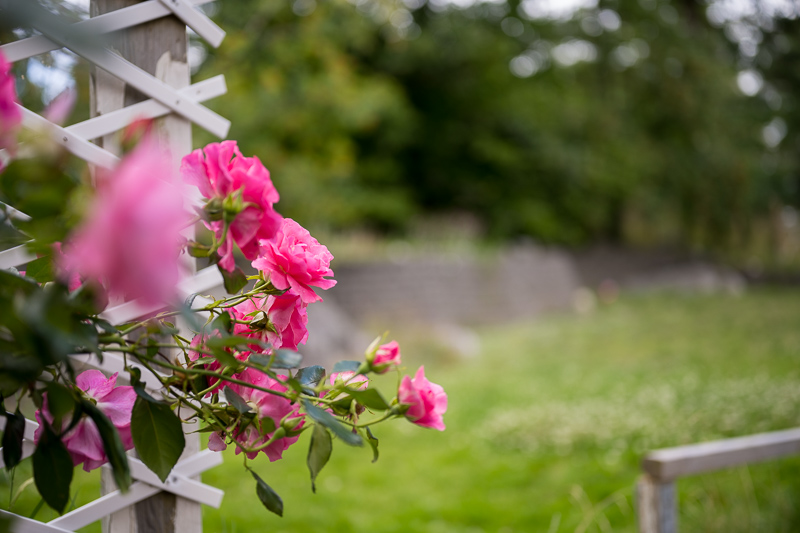
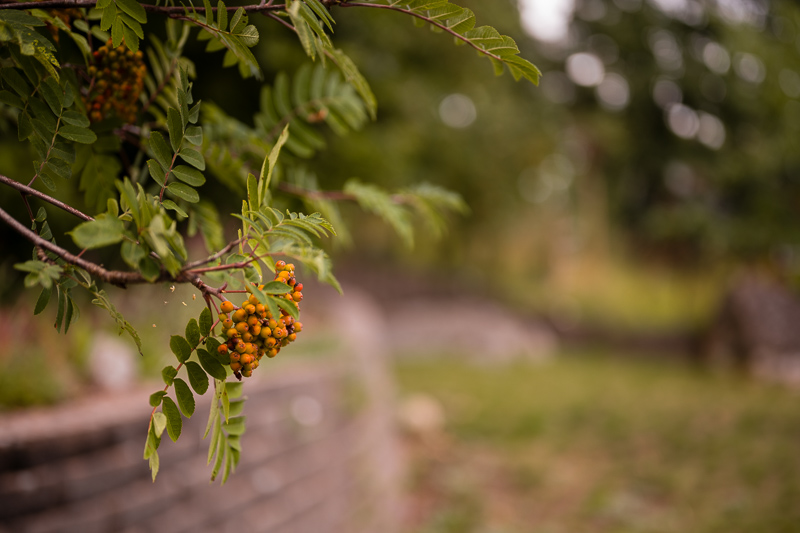
Even moving a little further away from the minimum focus distance, the background remains pleasantly blurred.


The portrait distance offers no difficulties either, with the background looking soft and appealing even in challenging environments.
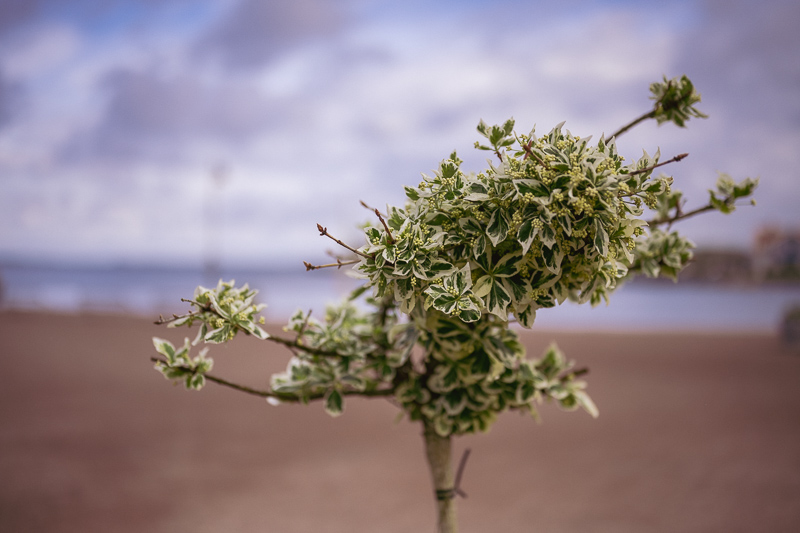
Nikon Z 7II | Nikon Z 50mm f/1.8 S | f/1.8

Even at greater distances, the bokeh remains smooth and pleasing. Now, let’s put it to the most difficult test: far away in a sunny environment with a background full of contrasting details.

Bokeh is, of course, a matter of personal preference. Here’s my take: While some lenses might deliver a touch more background blur, this one still impresses, earning a ‘Pass with Special Distinction’. Before testing it, I was quite skeptical about its bokeh due to the two aspherical elements. However, I was pleasantly surprised by the results.
Have a look at these pictures and many others among the sample image and tell me how you like the bokeh.
Conclusion
| I LIKE | AVERAGE | I DON’T LIKE |
| Build quality Sharpness Distortion control Vignetting Aberrations correction Flare resistance Sun stars Focus breathing Bokeh Autofocus |
Size & Weight | Price |
Designing a lens that is sharp, free of aberrations, distortion, and coma, with minimal vignetting, has always been a challenge for lens designers. In the past, they had to juggle priorities and find a compromise. With advancements in software correction, fixing vignetting and lens distortion has become relatively easy. This allows designers to focus more on achieving superior sharpness, letting software handle the rest in post-processing or with in-camera correction. But for this lens, it seems that Nikon has tried to fix them all. Unfortunately, the laws of physics can’t be changed, and this must come at a cost. Hence, the larger size and higher price tag.
There is not much to say about this 50mm f/1.8, this lens has almost everything. Solid build, Best-in-class centre sharpness, very good to excellent across the frame sharpness, virtually no distortion or aberrations, good vignetting and coma control, plus very good flare resistance. The only reservations are for its size and high price, especially for being a Nifty Fifty.
To conclude, this 50mm lens, while not the absolute top contender, holds its own against more expensive and bulkier competitors.
Writing articles like this one is both time-consuming and costs us a lot of money. If you found this article helpful and decided to buy one of these lenses, please consider using one of the affiliate links.
If you are not interested in buying any of the lenses, but you still found this article useful, interesting, or it saved you a lot of money, treat us to a coffee!
| Buy new: B&H, Amazon for $630 (Affiliate links) Buy used: eBay ~ $320 (Affiliate links) |
Alternatives
The market is flooded with 50mm f/1.8 lenses, and adding the f/1.4 options makes it extremely difficult to keep track of them all. The constant influx of new Chinese 50mm f/1.8 lenses only adds to the overwhelming number of choices. That’s why I’ve compiled a selection of just a few noteworthy alternatives.
Affiliate Links:
Nikon Nikkor AF-S 50/1.8G:
The predecessor of the current lens, smaller, lighter with very good to excellent sharpness. The reviewed Z lens beat it in every category though, but the AF-S version cost less than 1/3 of the Z lens and also requires an FTZ adapter to be used on Z cameras.
Buy new: amazon.com, amazon.de, amazon.co.uk, amazon.fr, amazon.com.au for $216 (Affiliate links)
Buy used from: ebay.com, ebay.de, ebay.co.uk, ebay.com.au , ebay.fr ≈$100 (Affiliate links)
Viltrox 50mm F1.8
It is a more modern AF lens from the third-party manufacturer Viltrox. This lens exists in Nikon Z and Sony FE mount. Autofocus and full electronic contact with the camera. If you have a Nikon Z camera you can use this lens without an FTZ adapter, which helps you avoid the hassle of the adapter and also saves you about $150-$250, but the lens itself is more expensive at about $360.
Buy New: Viltrox Store,
amazon.com, amazon.de, amazon.co.uk, amazon.fr, amazon.com.au $359 (Affiliate links)
If you buy from the Viltrox Store via the affiliate link or using this coupon code (MARTINMH) there, you’ll get an 8% discount.
Nikon NIKKOR AF-S 50mm f/1.4G
Nikon’s latest generation of F mount lenses and the most modern and advanced series (AF-S G generation) before the advent of the Z mount (same series as the f/1.8G), but it was one of the first AF-S G lenses and used older technology than the later AF-S lenses. By comparison, the f/1.8 G is sharper at all equivalent apertures, with better optical qualities but this one offers 2/3 of a stop faster aperture.
Buy new: amazon.com, amazon.de, amazon.co.uk, amazon.fr, amazon.com.au for $446 (Affiliate links)
Buy from: ebay.com, ebay.de, ebay.co.uk, ebay.com.au ~$299 (Affiliate links)
Sigma 50mm f/1.4 DG HSM Art Lens for Nikon F
A very well-built and sharp lens with performance second to none when it comes to lenses with the widest aperture at f/1.4, comparable with the Zeiss Otus 55/1.4 but with autofocus, lighter, smaller, and a lot cheaper.
Buy new: amazon.com, amazon.de for $750 (Affiliate links)
Buy used: ebay.com, ebay.de, ebay.co.uk, ebay.com.au (Affiliate links)
Zeiss Planar T* 50mm f/1.4 ZF and ZF.2
A little larger and heavier than the NIKKOR. ZF.2 is the newer version of the ZF, the difference is that ZF.2 has electronic contacts and can communicate with the modern Nikon cameras, otherwise identical. Also, this lens has 7 elements in 6 groups but with 9 aperture blades. Sharpness on par with Nikkor but much higher bokeh fringing.
Buy new: amazon.com, amazon.de for $725 (Affiliate links)
Buy used: ebay.com, ebay.de, ebay.co.uk, ebay.com.au ~ $425 (Affiliate links)
Voigtländer 50mm f2 APO-Lanthar
This is a manual lens but with electrical pins, no autofocus but proper EXIF info to the camera. It is available for Nikon Z, Sony E, and Leica M mounts. It is an outstanding lens with great sharpness, the cernter sharpness although fantastic, does not come up to Nikon’s Z 50/1.8 levels, but the the midframe and corner sharpness exceeds Nikon’s sharpness. None of these will be distinguishable in normal situations or seen in images unless you really enlarge the images to the extreme. It has better sunstars but a little more prone to ghosts with the sun in the image. It is more expensive than the Nikon Z 50/1.8.
Buy New: Amazon, B&H ~ $899 (Affiliate links)
Used: eBay (Affiliate link)
More Sample Images

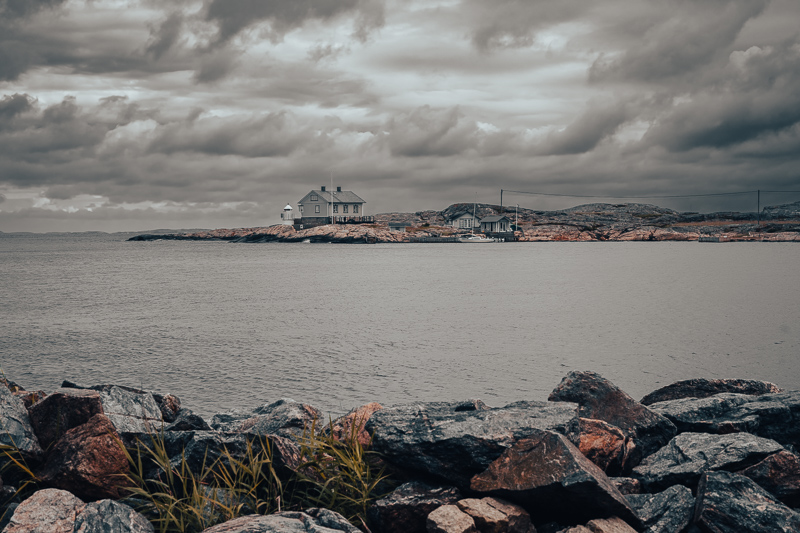
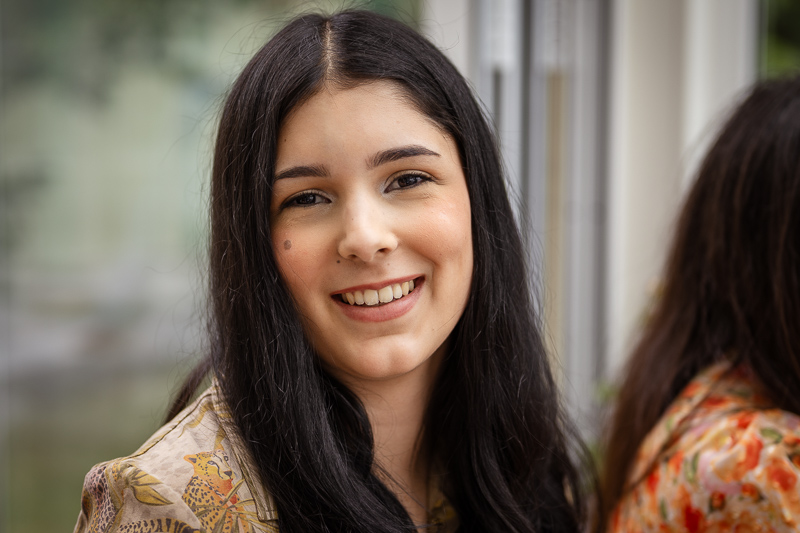






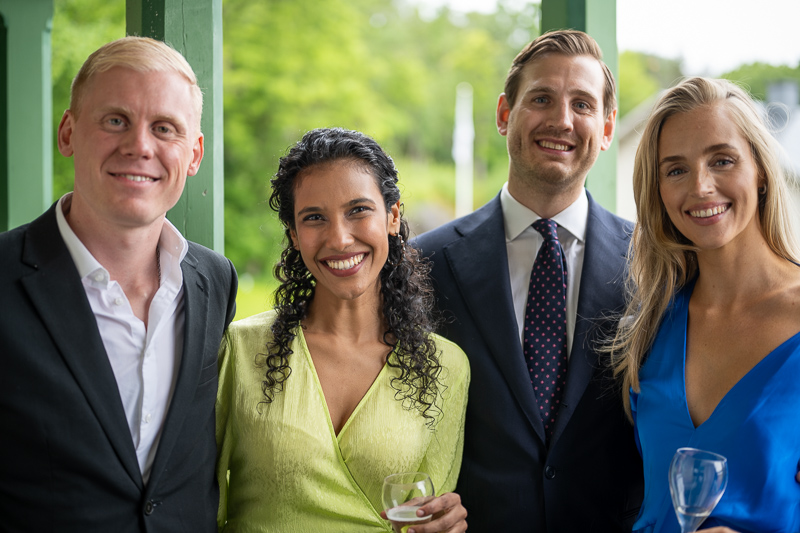
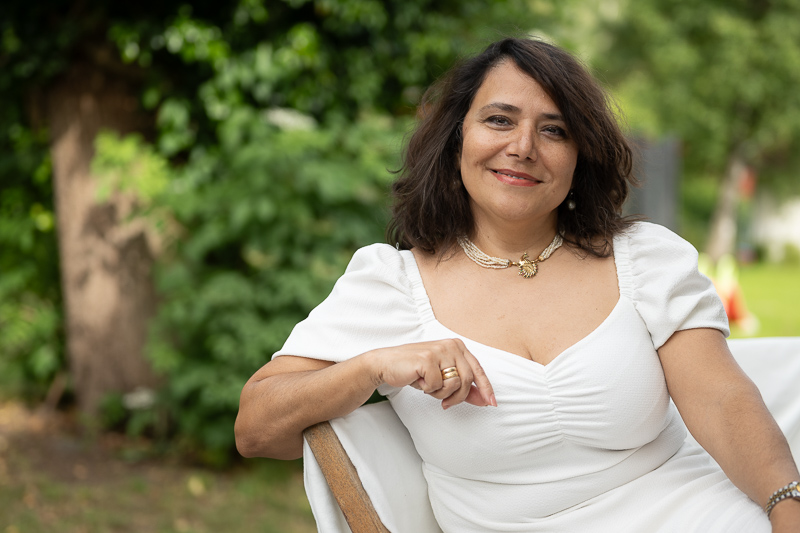


Most of the sample images in this review and many more can be found in higher resolution here.
Further Reading
- What camera gear and accessories do I use most frequently?
- Review: Nikon Nikkor AF-S 50mm f/1.8G
- Review: Nikon Nikkor 50mm f/1.4 AI-S
Support Us
Did you find this article useful or did you just like reading it? It took us a lot of time and money to prepare it for you. Use the Donate button to show your appreciation!
![]()
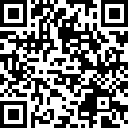
(Donations via Paypal or bank card)
This site contains affiliate links, for which I may receive a small commission if you purchase via the links at no additional cost to you. This helps support the creation of future content.
Martin
Latest posts by Martin (see all)
- Analogue Photography: Part 4 – Ilford HP5 Plus at a Historical Engine Factory - December 3, 2025
- REVIEW: 7Artisans AF 10mm f/2.8 (APS-C) - November 30, 2025
- REVIEW: 7Artisans AF 35mm f/1.8 - October 15, 2025














Thanks for the review. I would add the TTArtisan 50/1.4 to the alternatives. There is a Nikon Z version. It is a manual lens, but if someone can do without autofocus, the low price and excellent image quality are worth considering. It is currently my favorite lens on the Nikon Z5.
thank you for this nice review again Martin,
In 2018 this lens was 50% of the reason to add a Z6 (directly converted to full spectrum) and a Z7 to my D800 / Nikon F3 set.
Your review are confirming my findings as well. Imho its’ images have a nice character. And it’s great for infrared use, which is not always the case for modern lenses. I use it for astro time lapsing when the core of the milky way is rising / scratching the southeastern horizon is just spectacular with this lens. With the Z 20 mm f1.8 S this lens is probably the best in the Z-system. The 35 mm is less contrasty/sharp, but still good.
Just for UV photography sometimes I grab my 50 mm f1.8 AI (1976), (2001) or 50 mm AFD 1.8. The 10€ S 50 mm f1.4 used a a lensbaby (1966) tilted for vintage close ups with a lot of field curvature, sperical abberation and swirls.
Thanks for the nice words. Interesting info.
Maybe you’d share some of your photos av the milky way, to include in the review, although a 50mm is not a typical astro photography lens, it could be a cool inclusion.
will send some, when I am at home.
Also have some of the 35mm Z.
Very interesting review with the history of the Nikon 50mm, and how the changes were made to the Dubble Gauss design.
Like it very much to see pictures of the lens designs in the reviews!
You say that the price is high…, but as I compare it to my Sony Sonnar FE 55mm f1.8 it’s a bargain!
Oh, yes, compared to other modern high-end mirrorless 50/1.8 it is not expensive, BUT compared to Nikon’s previous Nifty Fifty lenses, the price is high.
Shouldn’t the Voigtländer 50mm 2.0 Apo-Lanthar Z mount be on your alternate list? It’s probably got the cleanest, most aberration-free/sharpest wide-open performance of any 50mm lens. Philip Reeve says “The Voigtlander 50mm F2 APO-Lanthar is among the optically most perfect lenses on the market right now.” And look at the thread on Fred Miranda: https://www.fredmiranda.com/forum/topic/1625777/
Unfortunately, I cannot include all the 50mm alternatives as I’ve also mentioned in the article, although the Voigtländer you mention is a mighty opponent and I possibly add it to the list. Nevertheless, while it is extremely sharp, it is not the sharpest 50mm. The reviewed Nikon Z has the edge wide open in the center. It is probably not distinguishable in normal situations but if yo pixel peep and look at the MTF measurements, you can see that the Nikon is sharper, the Nikon resolves about 77 lines per mm while the Voigtländer 71 lines per mm, that’s about 10% less. Although as mentioned not distinguishable with naked eyes if you don’t super enlarge the images. On the other hand the Voigtländer is sharper in midframe and corners, again not distinguishable in normal situations. Also the flare resitance of the Nikon is slightly better, as the Voigtländer is more prone to ghosts.
Isn’t the sharpest lens the one that’s sharper across the whole frame? If a lens is only slightly sharper in the center but it drops dramatically midfield to edge – that’s not a very well balanced sharpness.
If you look at the Lenstip comparisons in resolution and coma/astigmatism you’ll see quite a difference at mid-frame and edge between them; in favor of the Apo.
Particularly look at the Apo wide-open f/2: Lpmm are 70 center, 69 mid-frame, 68 edge.
Nikon: Lpmm stopped down to f/2 – 76 center, 57 mid-frame, 43 edge. The Nikon edges never gets above 55 Lpmm at any aperture.
Of course results vary lens to lens, but I think quality control on Voigtlander and Nikon are pretty good.
https://www.lenstip.com/577.4-Lens_review-Nikon_Nikkor_Z_50_mm_f_1.8_S_Image_resolution.html
https://www.lenstip.com/613.4-Lens_review-Voigtlander_Apo_Lanthar_50_mm_f_2_Aspherical_Image_resolution.html
1. I never said the Nikon is the sharpest lens available
2. I wrote it has class leading centre sharpness and that is true
3. the Voigt never beats the Nikon in the centre at any aperture
4. The center sharpness has always been more important than the corner sharpness, as in most cases the subject is closer to the centre than to the corner
5. Even on the Lenstip diagrams, while the Voigt is sharper in midframe and corner wide-open and up to f/5.6, it is less sharp from f/8 and smaller apertures even in midframe, and at f/11-f/16 even in the corner.
So, do you mean that because Voigt is sharper in midframe and corner in 50% of all apertures, is in general, is sharper than the Nikon, which is sharper in 100% of all apertures in the center and also is sharper in 50% of those areas where the Voigt is better?
I just looked at Cosina’s Voigtlander site. I knew that the 50mm Apo Lanthar lenses for Sony E mount and Leica M mount have a slightly different optical formula from each other – but I’m surprised that the Nikon Z mount’s formula has also been altered quite a bit from the Sony and Leica versions – it’s a third variation.
https://www.voigtlaender.de/z-mount/50-mm-12-0-apo-lanthar/?lang=en
https://www.voigtlaender.de/lenses/e-mount/50-mm-120-apo-lanthar-e/?lang=en
https://www.voigtlaender.de/lenses/vm/50-mm-120-apo-lanthar-aspherical/?lang=en
It rather looks to me like there is the wrong diagram depicted on the german/english Voigtländer page, because the Cosina page shows a diagram very similar to that of the E and M versions:
https://www.cosina.co.jp/voigtlander/z-mount/apo-lanthar-50mm-f2-aspherical/
That is peculiar. What other Voigt. lens around that focal length has 10 elements and a concave front element? I googled the A.L. Z’s diagram and there’s a Chinese site that has a diagram that compares the two: “The difference in optical structure between Voigtlander APO-LANTHAR 50mm F2 for Sony E-mount and Nikon Z-mount.”
https://digiphoto-techbang-com.translate.goog/posts/11662-z-mounts-first-tri-color-mark-voigtlander-apo-lanthar-50mm-f2-for-z-mount?_x_tr_sl=auto&_x_tr_tl=en&_x_tr_hl=en&_x_tr_pto=wapp
The diagram shown on DE website is actually diagram of 23/1.4 lens. Compare
https://www.cosina.co.jp/voigtlander/z-mount/nokton-d23mm-f1-2-aspherical/
Didn’t know that, but I can imagine that due to the wider mount and closer flange distance of the Nikon Z mount, an optical designer has more freedom to obtain the same level of optical quality. A less complex structure (or expensive glasses) needed to reach the same optical quality as for a narrow E-mount.
This is very interesting, I have seen that they do some tweaks to the same lenses for different mounts in their other lenses too.
Unfortunately, the Z-mount version of the 50/2 Apo-Lanthar has already been discontinued:
https://www.cosina.co.jp/news/%e3%83%95%e3%82%a9%e3%82%af%e3%83%88%e3%83%ac%e3%83%b3%e3%83%80%e3%83%bc-apo-lanthar-50mm-f2-aspherical-z-mount-%e7%94%9f%e7%94%a3%e7%b5%82%e4%ba%86%e3%81%ae%e3%81%8a%e7%9f%a5%e3%82%89%e3%81%9b/
It seems to be out of stock at US dealers already, but perhaps it is still possible to find remaining new stock elsewhere.
I am happy to report that the Z-mount Apo-Lanthars are coming back – the 50 in November and the 35 in December:
https://www.cosina.co.jp/voigtlander/en/z-mount/
https://www.cosina.co.jp/voigtlander/en/z-mount/apo-lanthar-50mm-f2-aspherical-ii/
Is it me, or does the Z 50/1.8 have the same 6 element / 5 group setup (although now with two mildly aspherical elements, and two ED) in the middle, flanked by 3 new elements on each side? 🙂
What is DX mode?
In Nikon cameras, the DX mode makes the full-frame camera act like an APS-C camera. It does this by using the Centre part of the sensor only, as large as on an APS-C camera. You will get exactly the same effect as if you had been using an APS-C camera. So, it converts you fullframe camera to an APS-C camera.
Wieder ein sehr schöner Testbericht. Dafür vielen Dank. Ich besitze das Objektiv inzwischen selbst und bin sehr glücklich damit. Was ich jedoch nicht bestätigen kann, ist das es frei von Aberation ist. Diese weist es bei bestimmten Motiven und Situationen sogar sehr deutlich auf.
Viele Grüße